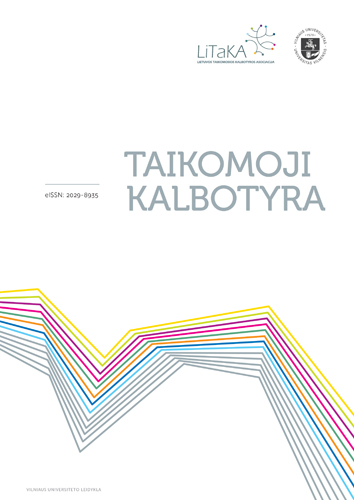The semantics of spatial prepositions: the main trends of research
The semantics of spatial prepositions: the main trends of research
Author(s): Ieva StasiūnaitėSubject(s): Semantics, Cognitive linguistics, Structuralism and Post-Structuralism, Philosophy of Language
Published by: Vilniaus Universiteto Leidykla
Keywords: prepositions; semantics; polysemy; synonymy; cognitive linguistics; structuralism;
Summary/Abstract: In this paper, the semantic treatment of spatial prepositions is examined, as demonstrated by abundant papers on linguistic data from various languages. The more traditional approach focuses on the prepositional meaning with respect to other words, both syntagmatically, when the surrounding context becomes of paramount importance, and in paradigms, which reflect hierarchical relations in a language system. In both cases, semantics and pragmatics are separated, while distinct meanings of a preposition are considered to be arbitrary. However, because of many references to synonyms (this principle of descriptive analysis is frequently employed in dictionaries) and due to partially true universal categories, which are suggested without verification by researchers investigating paradigms, it is not always possible to explicate the semantic disparity between similar or synonymous spatial prepositions or the abundant cases of polysemy in the traditional approach. This is why it is not the only trend of investigations into prepositional meaning. The modern framework employs the principles of cognitive linguistics, highlighting the conceptual structuring of entities or relations in extra-linguistic reality. It focuses on prepositional polysemy and synonymy in terms of geometric parameters, as well as functional (containment, force dynamics, etc.) and other relations between the figure and the ground. Researchers also introduce the principle of a radial category explicated by family resemblance and refer to the theory of prototypes. As a consequence, the distinct meanings of a preposition are regarded as related, originating from the most prototypical one, whereas the experiential shift from concrete to abstract space is accounted for by the theories of mental spaces and conceptual metaphors. It is claimed that it may be more beneficial to follow the cognitive line of investigation so as to exhaust the intricacies of spatial semantics in one language and/or cross-linguistically, thus contributing to the development of lexicography, machine translation, in the process of learning and/or teaching languages, as well as in facilitating the comprehension of relations among languages and cultures.
Journal: Taikomoji kalbotyra
- Issue Year: 2016
- Issue No: 8
- Page Range: 188-212
- Page Count: 25
- Language: English

